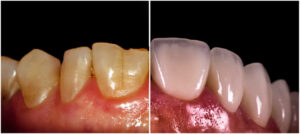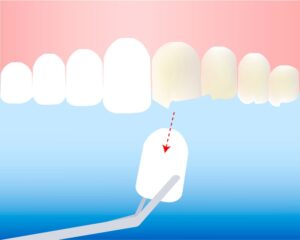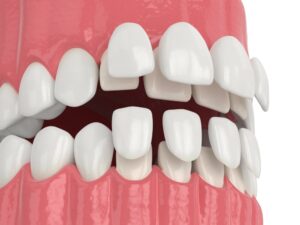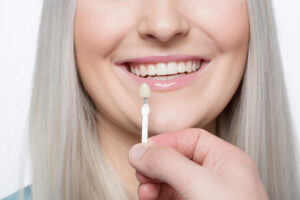Today on our website we want to present an excellent comparison of composite veneers vs. porcelain veneers. It is important to understand this topic well since composite veneers (also called resin veneers) and porcelain veneers are two of the main references in dental aesthetics today. Anyone who is going to use veneers must first decide whether to choose composite or porcelain veneers. If this is your case, reading this article will help you a lot in making that decision.
Ready for a stunning smile transformation? Discover unbeatable veneer specials in Miami and take the first step towards your dream smile. Don’t wait, schedule now and seize this limited-time opportunity!
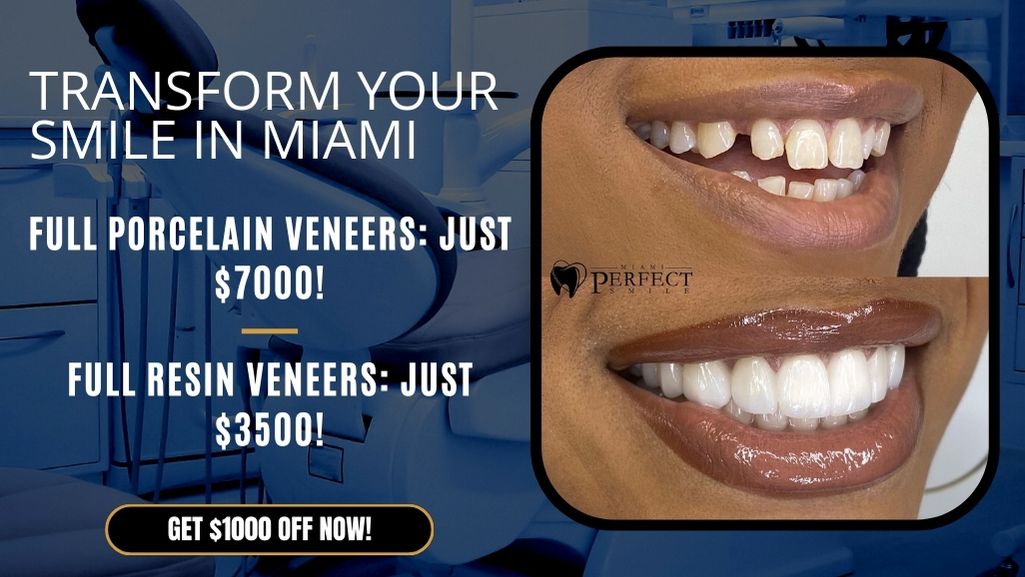
What are veneers? How and what are they used for?
The first thing is to understand what veneers are and what their function is. Only after understanding this can we understand the comparative details that we will go into later in this article. So, let’s explain all this a little, for which we will also briefly talk about the two main types of veneers today, which are composite and porcelain.
Dental veneers are a permanent cosmetic dentistry treatment, although they can also be restorative and functional. This treatment consists of masking the visible or front part of the teeth with sheets of some material (whether resinous or ceramic) that has the special quality of being very similar to the enamel that teeth have by nature.
This masking of the teeth is sometimes done to correct some disorders that have partially destroyed the teeth, such as:
- Untreated cavities.
- Previous dental restoration errors.
- Dental hypoplasia (absence of natural enamel on the teeth).
- Bite deviations.
- Excess interdental space.
- Changes in color or shape that the teeth acquire over time or with age.
- Fractures and dental wear.
- Effects of bruxism (clenching or grinding the teeth).
- Dental erosion by gastric acid reflux.
- As well as other functional problems in the teeth.
However, beyond all the functional objectives that we have just listed, dental veneers are also placed for purely aesthetic reasons. In reality, the cosmetic use of veneers is nowadays more frequent than functional or therapeutic use. That is why dental veneers are also called “aesthetic” or “cosmetic” veneers.
Regardless of the purposes for which they are to be used, be they functional or aesthetic, dental veneers are always carefully designed in a personalized way, based on a sample taking an impression of the patient’s bite. Its color is chosen based on the natural color of the teeth (and even the gums). For this, the so-called porcelain veneer color chart is used. What is sought with all this prior preparation is that the veneers appear to be the natural enamel of the teeth, or rather the sum of the enamel, which is transparent, plus the underlying dentin, which is what actually gives them their color. to the teeth
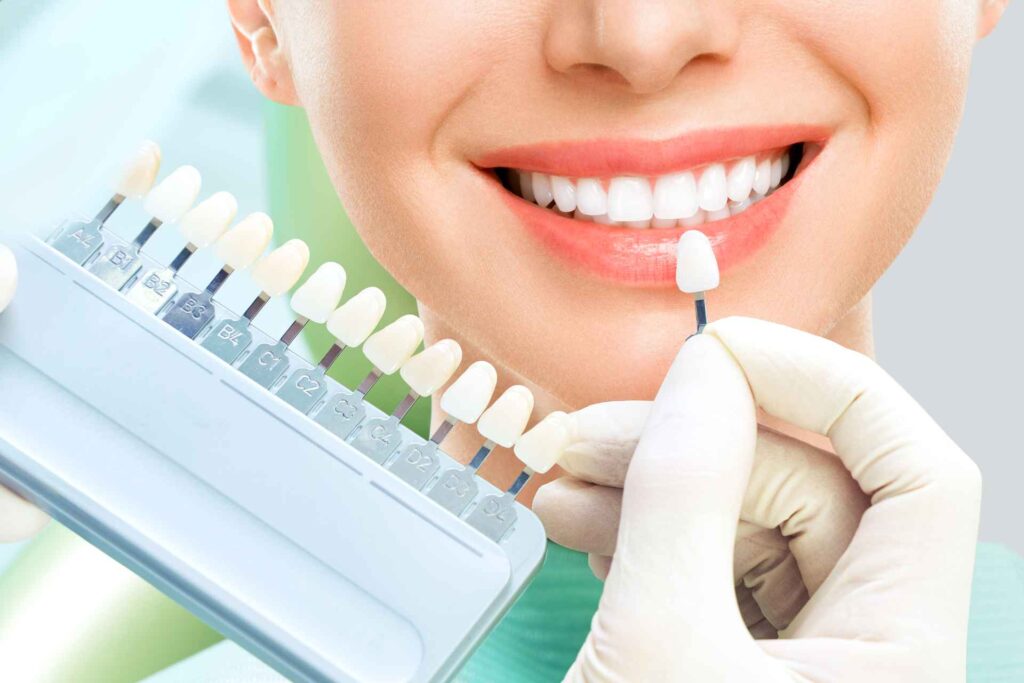
Details about the placement of dental veneers
Dental veneers can be placed on one or more teeth, depending on the patient’s needs. They constitute an aesthetic procedure applied to the dental surface, basically, a veneer that is applied to the teeth, using a material with a pleasant appearance. Although veneers manage to solve some functional disorders (such as the ones we saw in the list a little above), their objective is never to perform a structural function, as other dental treatments do, such as dental implants, and prostheses, overdentures, etc. Even when used for functional purposes, veneers play an important aesthetic role. In reality, this same functional/aesthetic duality is present in natural teeth.
Because dental veneers are charged per unit, the more veneers placed, the higher the cost of treatment. When used for restorative or functional purposes, veneers can be placed on one or a few teeth, to correct specific occlusion problems or restore functionality to a tooth.
Instead, when dental veneers are used for cosmetic purposes, they are placed on at least 6 teeth. In these cases, all the upper front teeth are usually veneered: the 4 incisors (2 central + 2 lateral) and the 2 canines (popularly known as “fangs”). Frequently, veneers are also placed on the upper teeth that follow the 2 canines, called first premolars (1 on each side). In this way, it is normal for veneers to be placed.
Placing 6 to 8 veneers on the upper front teeth is what is considered normal veneer treatment. These are, so to speak, the essential teeth of the smile, or the ones that are most noticeable from an external point of view. Although later we will talk about prices, knowing the price per dental veneer unit offered by the clinic, the patient himself can make a prior calculation of what the total cost of a veneer treatment will be. However, there are always clinics that offer discounts when the complete basic set of veneers is purchased.

On the other hand, if the patient wishes to have what is called a “smile design” or “cosmetic smile” (in English: Smile Design or Smile Makeup ), then the 6 or 8 front teeth of the upper jaw, can add the 6 or 8 front teeth of the lower jaw. In this way, the entire front of the mouth is covered by dental veneers, which results in a whiter, Hollywood-style smile.
In fact, smile design is popularly called the “Hollywood smile”, due to the large number of actors who undergo this treatment. The same can be said of numerous public or media figures who, without being actors, have smiles designed to project a public image that they consider more appropriate for today’s ultra-high-definition mass media.
Two main types of dental veneers: composite and porcelain
We said towards the beginning of this article that dental veneers can be divided into two large groups: composite veneers (also called resin or composite resin veneers) and porcelain veneers. It must be taken into account (and we will return to this) that, although composite veneers are of a single type, porcelain veneers are subdivided into 3 types: traditional porcelain veneers, and zirconium veneers, and lithium disilicate veneers.
1) Composite veneers
Composite veneers are made from a combination of resins. They are normally made up of a mixture of carbon, glass, and boron fibers. In some cases, they may include an addition of ceramic or zirconia micro stones. This resinous mixture is activated when it is applied to the teeth, and as it is applied, it is given the desired shape.
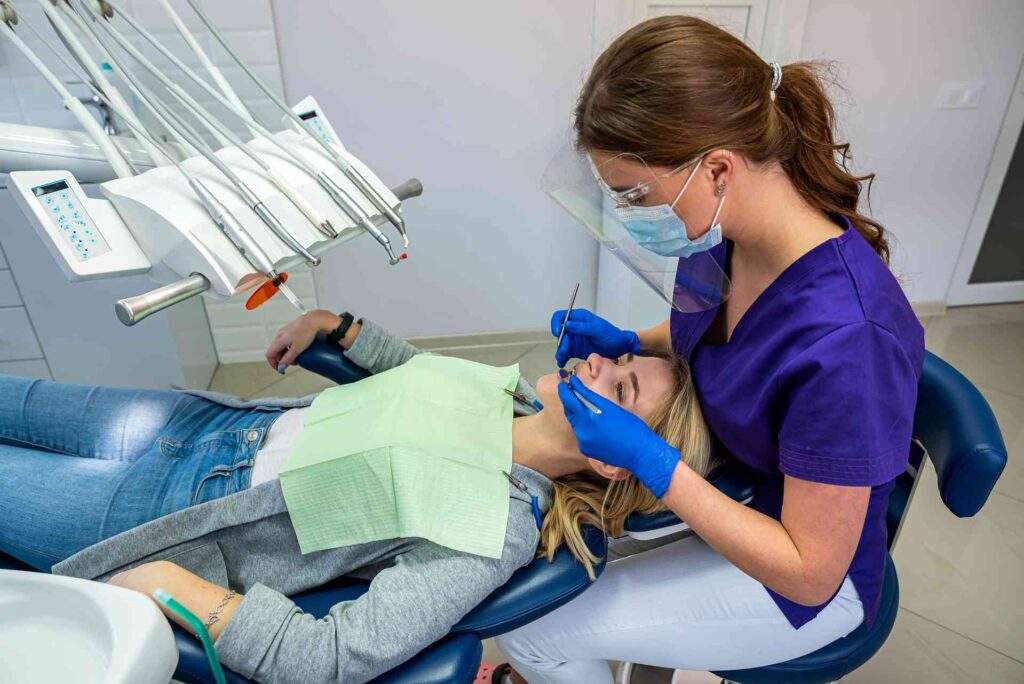
To shape the resin on the teeth before it dries, a predesigned plan is followed and agreed between the specialist and the patient. This pre-designed plan is based on the patient’s expectations, their bite shots, and what the cosmetic dentist deems appropriate for the case, which is never identical to other cases.
Composite veneers are considerably less expensive than porcelain veneers, but they also last much less (only about half the time). They are also more likely to change color over time as a result of the chemical action of foods, food dyes, and other substances that enter the mouth. When they change color and their presence begins to show on the teeth, they are perceived as less aesthetic and their replacement can be considered.
2) Porcelain veneers
Porcelain veneers are manufactured in the laboratory from different types of materials, which are subjected to the same manufacturing process as any porcelain. There are three or more types of porcelain veneers, depending on the material used during manufacture, and according to the qualities that are obtained from the combination of specific ingredients. So we have:
- Traditional porcelain veneers.
- Zirconium veneers.
- Lithium disilicate veneers.
There are also other porcelain veneers that, although they are called and marketed by a specific brand (Emax, Componeer and Lumineers, for example), are nonetheless variants of porcelain veneers with relatively similar formulas, but with different additives. Once made from molds taken from the patient’s teeth, all types of porcelain veneers are adhered to the respective teeth, for which special glues, non-toxic to humans, are used.
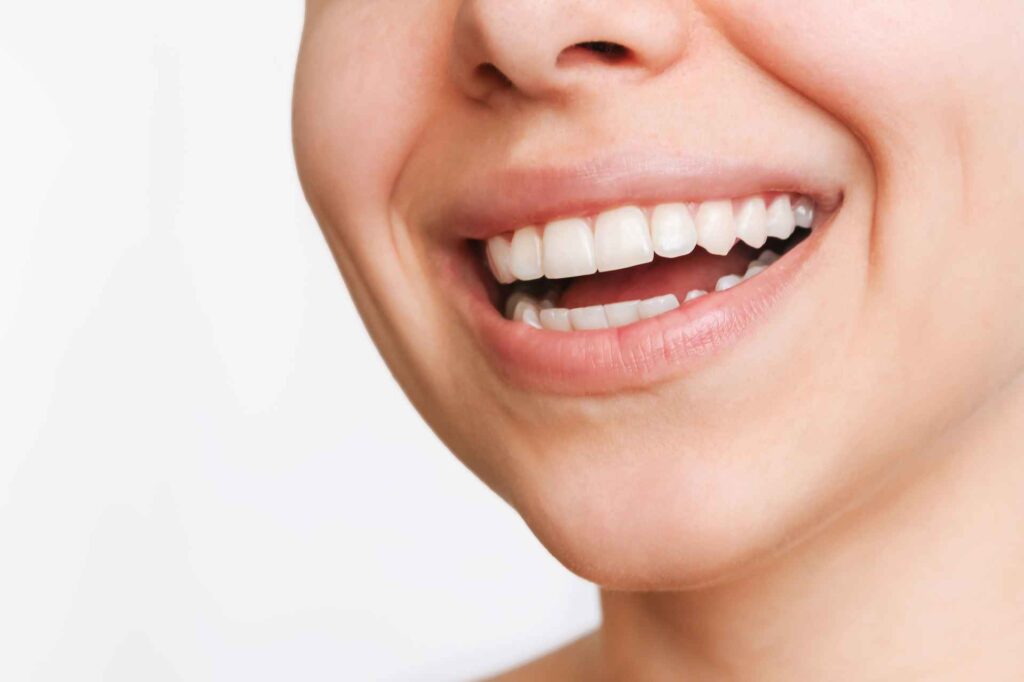
Comparative table of the three types of porcelain veneers
Actually, porcelain, more than a specific material, is a special way of making ceramics. That is why, today (because these materials are under continuous research), there are 3 types of porcelain veneers: traditional porcelain veneers, zirconium veneers, and lithium disilicate veneers. These last two are considered highly aesthetic dental veneers, thanks to their level of finish and their extraordinary durability and resistance. For this reason, they are more expensive than traditional porcelain veneers.
Let’s briefly look at, in the following table, the most notable characteristics of the 3 types of porcelain veneers. This will help us better understand the comparison that we will make between composite and porcelain veneers in a section after this one. If you want to know many more details about porcelain veneers, you can read this medical or investigative article published in SciELO.
| COMPARATIVE TABLE BETWEEN THE 3 TYPES OF PORCELAIN VENEERS | |||
| CHARACTERISTIC | Traditional porcelain veneers | Zirconium, zirconium or zirconia veneers | Lithium disilicate veneers |
| Material | They are made from traditional Western porcelain (not to be confused with the famous China porcelain). This porcelain is made up of a mixture of kaolin, feldspar, quartz, and some other additives. | They are made using the same mixture as traditional porcelain, but zirconium (also called zirconium or zirconia) is added, a transition metal, to which a minimum percentage of yttrium oxide is added. | They are made from a combination of ceramic and glass with LS2 lithium disilicate. They are three times more resistant than any other porcelain veneer (resistance approximately between 360 and 400 MPa). |
| Description | Its appearance is very similar to that of the natural surface of the teeth in terms of consistency and color. | They are translucent (like natural tooth enamel), so they take on the color of tooth dentin. | They are so fine and resistant at the same time, that they are the only ones so far that do not require grinding teeth. |
| Price | Between $340 and $450 for each veneer. | Between $565 and $730 for each veneer. | Between $565 and $790 for each veneer. |
| Durability | From 10 to 15 years or more, if the care and hygiene measures and normal visits to the dentist are followed. | 20 years or more, as long as the care and hygiene measures and normal visits to the dentist are followed. | 25 or 30 years or older, if normal care and hygiene measures and normal visits to the dentist are followed. |

Comparative table of composite veneers vs. Porcelain veneers
Here we present an excellent comparative summary table of composite veneers vs. Porcelain veneers. We have compared all possible parameters between these two types of dental veneers. After the table, we will go into some more details, and above all, we will give you some important conclusions as a result of the comparison.
| COMPARISON TABLE OF COMPOSITE VS. PORCELAIN VENEERS | ||
| CHARACTERISTIC | Composite veneers | Porcelain veneers |
| Cost | The cost is approximately $250 for each tooth covered with the composite. | They cost from $340 to $790 for each veneer (the price will depend on the type of porcelain veneer). |
| Who is a good candidate to use them (age) | They can be placed in people of any age. If it is necessary to place veneers in children under 7 years of age, these are the most indicated. They are also ideal for patients who do not have natural enamel, or who do not tolerate tooth wear for the placement of porcelain veneers. | They can be placed for people of any age who need to repair dental wear or trauma or perform cosmetic dentistry procedures. But in practice, they are not recommended for people under 18 years of age. Children under 7 years of age (deciduous dentition) are never placed. |
| Main advantages | Their main advantages are their low price and that they almost never require the tooth enamel to be worn down to place them. | Its main advantages are its resistance, its durability, and its appearance practically identical to the natural dental surface. |
| Main disadvantages | Its main disadvantages are its short duration, its coloration not identical to natural enamel, and its vulnerability to chemical substances and food dyes. | Its main disadvantage is that to put them on you have to wear down the tooth enamel irreversibly. Its high price can be seen as another disadvantage. |
| Aesthetics and conservation | Their color is not identical to natural dentin, and they can usually begin to show when they darken or change color over time, or due to the action of food or food dyes. | Its color is almost identical to that of the natural tooth. They do not lose their original shine or darken over time. Those around you do not notice that you are wearing them, especially if they are highly aesthetic veneers. |
| Manufacturing | They are made from a mixture of resins at the time of placement (although samples of the teeth are previously taken). They are shaped as they are laid before the mixture dries. | They are manufactured with porcelain in the laboratory, for which personalized samples of the patient’s teeth are previously taken and a previous design is made according to their expectations. |
| Placement time | The composite is applied to each tooth, and it must be shaped on the spot. If there are several teeth, more than one session at the dental clinic may be needed. | They are placed one by one on the corresponding tooth according to a previous design. This placement, with few exceptions, is done during a single session in the dental clinic. |
| Need to grind teeth | Normally they do not require any type of tooth wear to place them (and therefore no anesthesia is needed), except in some exceptional cases, in which a minimum of tooth wear is required. | They require tooth wear to look natural, so it will be necessary to apply a little local anesthesia. The finer the veneer, the less tooth wear it will require. Lithium disilicate ones do not require tooth grinding. |
| Durability | The usual thing is that they last between 5 and 7 years, if the normal care and hygiene measures are followed and if you visit the dentist at least once a year. The most advisable thing is to make 2 annual visits to the dental clinic for revision. | Depending on the type of porcelain veneer, the durability is from 15 years (traditional porcelain) to 30 years (lithium disilicate), if the same care and hygiene measures are followed as for a natural denture. |
| Consistency and adherence | They are not normally brittle. But the composite does not have the same level of adhesion to the teeth as porcelain veneers, and it can come off. Its initial adhesion level depends on the composition of the resin. | They are a little more brittle than composite ones (this depends on the type of porcelain). But if they are not subjected to strong bites, they do not break or come off. Its initial adhesion level is based on the quality of the glue. |
| Resistance to aggressive external agents | They are not very resistant to chemical attacks and common substances such as citric acid, alcohol, coffee, tea, antibiotics, or mouthwashes or mouthwashes. | Highly resistant to common substances such as citric acid, alcohol, antibiotics, or mouthwashes. They are even more resistant than natural enamel. |
| Comfort level when wearing them | They are normally comfortable. Some patients may feel that they have an addition on the tooth, but others do not experience that strangeness at all. | They are highly comfortable, to the point that the patient forgets that they are wearing them. But at first, they can be a bit bothersome due to tooth wear or sensitivity. |
| Biological reactivity and hygiene | Normally its chemical composition does not trigger biological reactions. If they are well polished when put on, their surface retains tartar and plaque to about the same extent as natural tooth enamel. | Their surface is highly smooth and polished since manufacture, so they do not trigger biological reactions and tend not to easily retain tartar or plaque (they even retain less tartar than natural tooth enamel). |
| Follow-up after placement | Although they do not require medical follow-up, 1 or 2 annual visits to the dental clinic for check-ups and supervision are recommended. | Normally they do not require any medical follow-up, although it is recommended to visit the dentist according to the normal frequency. |
| Radiopacity (sensitivity to X-rays) | Being made of a somewhat denser material than porcelain veneers, they are less able to allow X-rays to pass through to the tooth. | They have a density very similar to that of natural dentin, so the underlying teeth can be explored with X-rays. |

Composite veneers vs. Porcelain Veneers: Conclusions
After so many comparative details that we have given about composite veneers and porcelain veneers, it is necessary to answer a frequently asked question: If we compare composite veneers vs. porcelain veneers, which is better? It is not such a difficult question to answer, and in a way, we have already been answering it in the comparison table.
Porcelain veneers are considered better than composite veneers. There are circumstances in which composite veneers are the most recommended. For example:
- In cases where minimal aesthetic dental repairs are required, of 1 or 2 teeth, for eminently functional reasons and not so much for aesthetic reasons (because they are teeth or molars that are not visible, or because the person simply does not esthetics is so important to him).
- In cases of repairs for dental fractures in children under 7 years of age, who still have baby teeth and who will soon have permanent teeth. In those cases in which the permanent dentition is about to emerge, it is preferred not to place porcelain veneers but rather composite ones.
- In cases where the patient cannot monetarily access the cost of porcelain veneers, but still requires a treatment based on veneers.
- In cases where the patient prefers not to subject the natural enamel of their teeth to irreversible wear for aesthetic reasons only.
However, beyond these cases, composite dental veneers are only the cheapest and most affordable option, with less desirable characteristics than those of porcelain veneers in any of their 3 current variants. It’s not unanimous, but porcelain veneers are often considered a better option than composite veneers.
Although it is true that from a monetary point of view, composite veneers are usually much cheaper, many people prefer to consider paying for porcelain veneers a good investment, thanks to their advantages in terms of aesthetics, comfort, and durability. This is even more true if we consider that there are dental clinics that grant credits and other payment facilities for porcelain veneers, with the aim of compensating prices.
It should be mentioned that porcelain veneers are difficult to manufacture and are always made in laboratories. They require hours of work by specialized personnel, and that is why their price is higher. If a dental clinic has its own manufacturing laboratory (something that is not very common), the price of the veneers is reduced. But the normal thing is that clinics around the world have to resort to external laboratories for the manufacture of veneers, and that raises the final prices of the treatment.

The most substantial advantage that jumps out when comparing composite veneers vs. porcelain veneers, is that composite veneers, with rare exceptions, do not require the wear of the natural enamel of the teeth. On the other hand, porcelain veneers (except in the cases of ultra-thin and innovative materials such as lithium disilicate, which are not yet so popular precisely because of their high price), require the wear of up to 30% of the tooth structure. This represents an irreversible loss and possibly in the future implies a commitment to the use of veneers or any other treatment that replaces the natural enamel.
If the patient prefers to try the experience of wearing veneers without committing to a permanent change, it is best to try composite veneers first. This is also recommended whenever the teeth to be covered are very few, very small, or not noticeable from the outside. However, the use of composite veneers is not recommended for people who smoke or drink a lot of coffee, since these substances easily cause staining and darkening on the composite surface and reduce aesthetics.
In conclusion, porcelain veneers are generally considered better than composite veneers. This is because they are more aesthetic and have a considerably longer lifespan. They are very resistant to chemicals present in foods, drinks, and solutions with which we can come into daily contact, such as citric acid, alcohol, coffee, antibiotic drugs, mouthwashes, etc. In this way, they can maintain their shiny appearance permanently.



